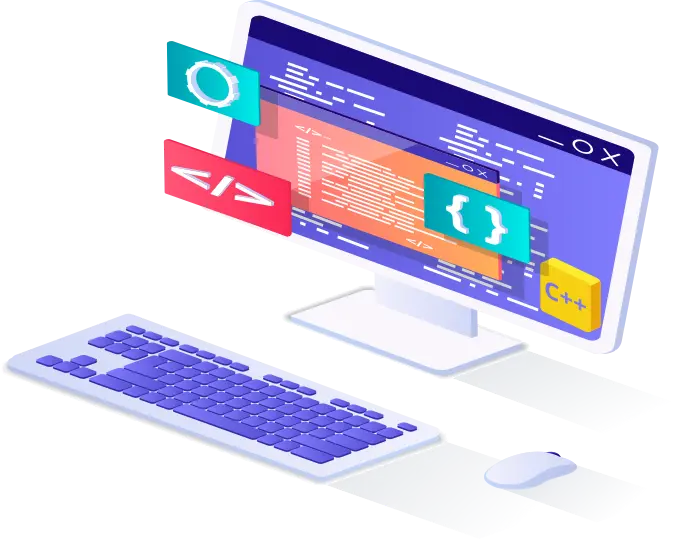Software robustness is an important characteristic of any high-quality software system, regardless of its purpose or complexity. Without robustness, software is prone to crashes, errors, and vulnerabilities, which can compromise the functionality, security, and reliability of the system.
Robustness is an essential quality attribute for software systems, because it ensures that they can continue to operate correctly in real-world scenarios and avoid potential safety hazards or loss of critical data.
A robust software system can effectively handle errors, exceptions, and unexpected inputs, without crashing or causing the system to fail.
In this article, we will discuss what software robustness is, why it’s important, and how Nexus Software Systems delivers robust software.
Software Robustness: What It Is and Why It Matters
Software robustness refers to the ability of a software system to continue functioning correctly and reliably even in the face of unexpected or abnormal inputs or situations. These might include things like incorrect user input, network failures, hardware malfunctions, or even deliberate attempts to disrupt the system.
A robust software application can continue to function properly despite errors, exceptions, or other unexpected events that might otherwise cause it to crash or malfunction.
A robust software application is one that is able to:
- Handle a wide range of inputs, including those that are unexpected or incorrect.
- Recover from errors or failures gracefully, without causing data loss or system instability.
- Manage large amounts of data and complex operations without slowing down or crashing.
- Maintain the integrity and consistency of data, even in the face of unexpected events, failures or external stresses, over a long period of time.
- Protect against security threats and vulnerabilities, such as hacking, malware, or unauthorized access.
The most robust systems are evolvable: they can be easily adapted to new situations with only minor modification.
While the International Organization for Standardization (ISO) 25010(E) does not define robustness, it does define reliability as the “degree to which a system, product or component performs specified functions under specified conditions for a specified period of time.”
When we considering the robustness of a system, we consider not only how resistant it is to failure but also the support that it provides to detect and recover from faults and failures.
For a software system to be robust, its architecture will typically support a mix of capabilities to detect and recover from failures, and it will usually contain redundant (backup) resources that can be invoked in the case of a failure of a “live” resource.
It’s important to design the architecture with sufficient resources to withstand failures of individual system elements. And to implement the appropriate strategies to monitor and manage these resources.
Why is software robustness important?
The importance of software robustness cannot be overstated as it directly impacts the user experience and the reliability of the software system.
The benefits of building robust software include:
- Increased reliability and consistency of the application
- Reduced downtime and maintenance costs
- Improved user experience and satisfaction
- Enhanced security and protection against cyber threats
- Increased trust and confidence in the software
The importance of software robustness is perhaps best illustrated by considering some of the consequences of software failure. In the healthcare industry, for example, a malfunctioning medical device or system could have catastrophic consequences for patients. In finance, a trading algorithm that fails to handle unexpected market conditions could result in significant financial losses. In transportation, a self-driving car that fails to detect a pedestrian could cause a serious accident. In each of these scenarios, software robustness is critical for ensuring the safety and reliability of the system.
For another example, imagine a banking application that is not robust. If a user enters an incorrect account number, the application may crash or produce incorrect results, which could result in financial loss for the user or the bank. In contrast, a robust banking application would detect the error and handle it gracefully, preventing any significant harm.
Software robustness is important for a number of reasons. First, it helps to ensure that the software application can continue to function properly even when it is faced with unexpected inputs, errors or stressful environmental conditions. This can help to prevent downtime, improve reliability, and increase user satisfaction.
In addition to these benefits, software robustness can also help to reduce the risk of security vulnerabilities. When software is not robust, it may be more susceptible to attacks or other security threats. By building software with robustness in mind, we help to reduce these risks and improve the overall security of the application.
Software robustness can also help to reduce the cost of maintaining and supporting the application over time. When software is robust, it’s easier to diagnose and fix issues that arise, which reduces the amount of time and resources required to support the application.
How is software robustness achieved?
Achieving software robustness requires a number of different strategies and techniques.
The design phase of software development is critical for building robust applications. When designing software, it’s important to consider the potential failure points and plan for how the system will handle errors and unexpected events.
Some of the key approaches that we use to build robust software applications include:
-
Design for Fault Tolerance: Fault tolerance is the ability of a software system to continue operating correctly even in the face of hardware or software failures. This can involve using redundant systems, implementing error-handling mechanisms, and ensuring that the application can recover from failures gracefully so that the system can continue to operate even if some components fail.
-
Modular Design: A modular program design can help improve software robustness by isolating different parts of the program from one another. This can prevent errors in one module from causing failures in other parts of the program.
-
Defensive programming: Defensive programming is an approach to software development that aims to anticipate and handle potential errors and exceptions at every stage of the development process. This involves techniques such as input validation, error handling, and exception handling, to ensure that the software can recover from unexpected situations. By incorporating defensive programming techniques into our code, we help to ensure that the software application can continue to function properly even when it encounters unexpected events.
-
Testing and Quality Assurance: Rigorous testing and quality assurance processes are essential for ensuring that software systems are robust. This might involve a combination of unit tests, integration tests, and system tests, as well as manual testing and code reviews. In addition, automated testing tools can help to identify potential errors and vulnerabilities in the software.
-
Proper error handling: Software should be designed with proper error handling, which means that it should detect and handle errors gracefully. This may involve displaying error messages to the user, logging errors for later analysis, or automatically recovering from errors.
-
Code reviews: Code review (sometimes referred to as peer review) is a software quality assurance activity in which one or several people other than the original author check a program. Code reviews can help to identify potential errors and vulnerabilities in software code.
-
Using established coding practices: Established coding practices, such as coding standards, design patterns, and best practices, are a set of guidelines for a specific programming language that recommend programming style, practices, and methods for each aspect of a program written in that language. Where coding conventions have been specifically designed to produce high-quality code, and have then been formally adopted, they then become coding standards. Coding standards help to ensure that software is written in a safe and reliable manner.
-
Detecting Faults : Before any system can take action regarding a fault, the presence of the fault must be detected or anticipated. One method of detecting faults is by using a monitor. A monitor is a component that is used to monitor the state of health of various other parts of the system: processors, processes, input/output, memory, and so forth.
-
Continuous monitoring and improvement: Software systems should be continuously monitored for errors and other issues, and improvements should be made as needed to ensure that the system remains robust over time.
-
Prioritize Security: Security is a critical aspect of software robustness, as a system that is vulnerable to cyberattacks or malicious actors cannot be considered robust. We follow secure coding practices and implement security measures such as authentication, encryption, and access control, to ensure that the system is protected against potential threats.
Prevent Faults
Instead of detecting faults and then trying to recover from them, what if your system could prevent them from occurring in the first place? Although this sounds like some measure of clairvoyance might be required, it turns out that in many cases it is possible to do just that.
One example involves taking an element of a system out of service and resetting the element in order to scrub latent faults (such as memory leaks, fragmentation, or soft errors in an unprotected cache) before the accumulation of faults becomes service affecting (resulting in system failure). Another term for this is software rejuvenation.
Of course, an excellent way to prevent faults, at least in the system you’re building, is to produce high-quality code. This can be done by means of code inspections, testing, coding standards, pair programming, solid requirements reviews, and other good software engineering practices such as those listed above.
See: Improve Your Code by Avoiding the Top 11 Software Development Mistakes
Conclusion
Software robustness is a critical quality attribute for any software system. By ensuring that software can continue to operate correctly and reliably even in the face of unexpected situations or inputs, robustness helps to ensure the safety and reliability of the system.
Achieving robustness requires a combination of techniques such as fault detection, modular design, defensive programming, testing, quality assurance, monitoring and security. By following these strategies, Nexus Software Systems creates software systems that are resilient, reliable, and able to operate correctly in real-world scenarios. This capability is essential for ensuring a seamless user experience and reducing the risk of costly downtime and system failures.
Contact us today to get help building a robust software system.
References: Robustness at Carnegie Mellon University Software Engineering Institute



